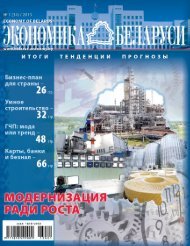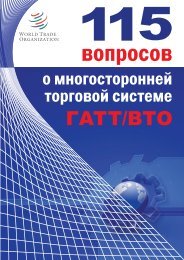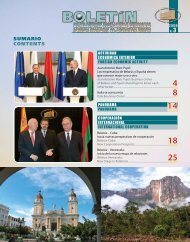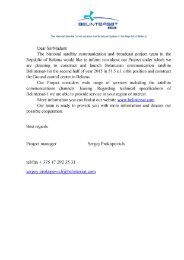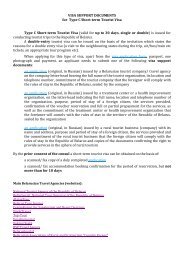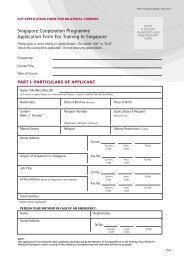Human Development Report 2013 - UNDP
Human Development Report 2013 - UNDP
Human Development Report 2013 - UNDP
Create successful ePaper yourself
Turn your PDF publications into a flip-book with our unique Google optimized e-Paper software.
• Turkey. The state created favourable economicconditions that encouraged constructionand the manufacture of furniture,textiles, food and automobiles—all industrieswith a high capacity to absorb labour.Turkey’s export basket has since moved towardsproducts that involve more processing,higher technology content and the use ofskilled labour. 40• Tunisia. Since the early 1970s, Tunisia hasrelied on financial and fiscal incentivesto attract foreign and domestic capital toexport-oriented industries, particularly forgarment production. 41 Various forms ofbusiness– government relations have enhancedindustrial upgrading and promotedindustry clusters. Today, Tunisia is among thetop five exporters of apparel to the EuropeanUnion. 42 It also has the potential to exporthealth services by providing treatment to visitorsfrom neighbouring countries, to a valueequivalent to a quarter of Tunisia’s privatehealth sector output. 43• Chile. After returning to democracy in the1990s, Chile encouraged investment andtechnological upgrading in sectors wherethe country had an intrinsic comparativeadvantage. It subsidized the formation andoperation of innovation-based consortiabetween private firms and universities andengaged in other innovation-promotingactivities. 44Committing to long-termdevelopment and reformAchieving enduring transformation is a longtermprocess that requires countries to chart aconsistent and balanced approach to development.Some technical or managerial solutionsmay appear to be attractive quick fixes, but theyare generally inadequate.• China. Since market-oriented reforms in thelate 1970s, China has experienced a “complexand interlocking set of changes: from acommand to a market economy; from ruralto urban; from agriculture to manufacturingand services; from informal to formaleconomic activities; from a fragmented setof fairly self-sufficient provincial economiesto a more integrated economy; and froman economy that was fairly shut off fromthe world to a powerhouse of internationaltrade”. 45 The scale of these changes requireda committed state pursuing a long-term visionto build the necessary institutions andcapacities. The leadership deliberately replacedthe old guard, who might have beenexpected to resist change, with a younger,more open and better educated governmentbureaucracy. By 1988, a remarkable 90% ofofficials above the county level had beenappointed since 1982. 46 Capacity upgradingis still a priority, and the education levelsof officials have risen continuously. TheChinese bureaucracy has been designedwith a strong results orientation, linkingcareer development to the achievement ofcentral objectives of modernization andeconomic progress. 47People-friendly developmental states needstrong political leadership committed to equityand sustainability. Effective leadershipaligns the long-term goals of policymakers andenables constituencies to appreciate the state’swork in fostering individual capabilities andsocial integration for human development. Thisrequires a balanced approach to developmentand an ability to convert crises into opportunitiesfor introducing broad-based economicreforms.• Brazil. By the time the Brazilian transformationto a developmental state began(around 1994), the government had implementedmacroeconomic reforms to controlhyperinflation through the Real Plan andconcluded the trade liberalization that hadbegun in 1988 with tariff reductions andthe removal of other restrictions. 48 Tradeopenness and prudent monetary and fiscalpolicy followed, as did innovative socialprogrammes that reduced poverty and incomeinequality.In large and complex societies, the outcomeof any particular policy is inevitably uncertain.<strong>Development</strong>al states need to be pragmatic andtest a range of different approaches.• China. China’s reform and opening resultedfrom an explicit choice in the late1970s to relax constraints on people’s participationin economic decisions. But theinstitutional innovations that went on tounderpin China’s transformation resembledDeng Xiaoping’s approach to “crossing thePeople-friendlydevelopmental statesneed strong politicalleadership committed toequity and sustainabilityChapter 3 Drivers of development transformation | 73



